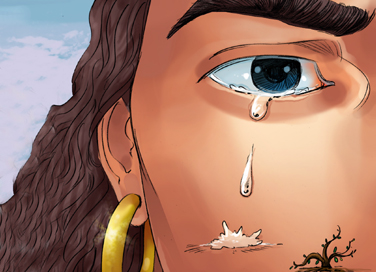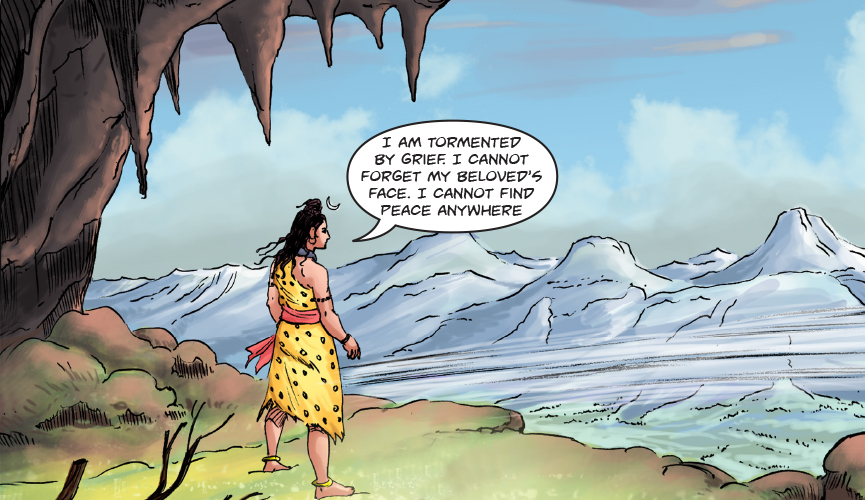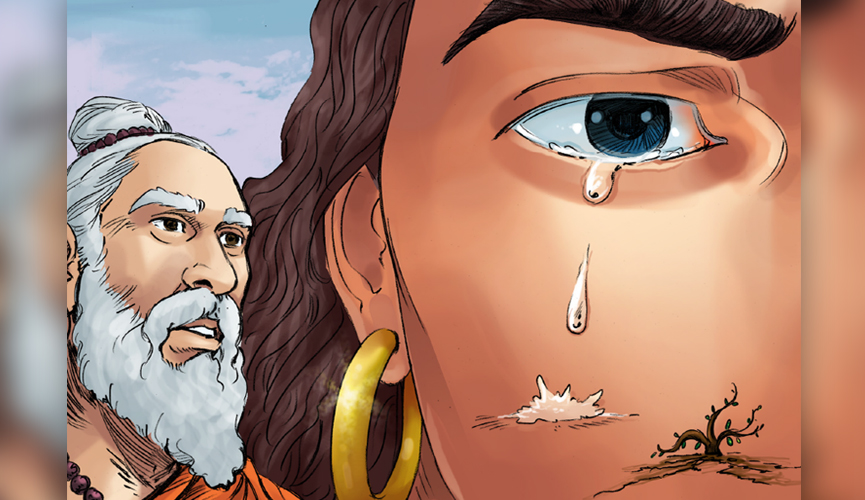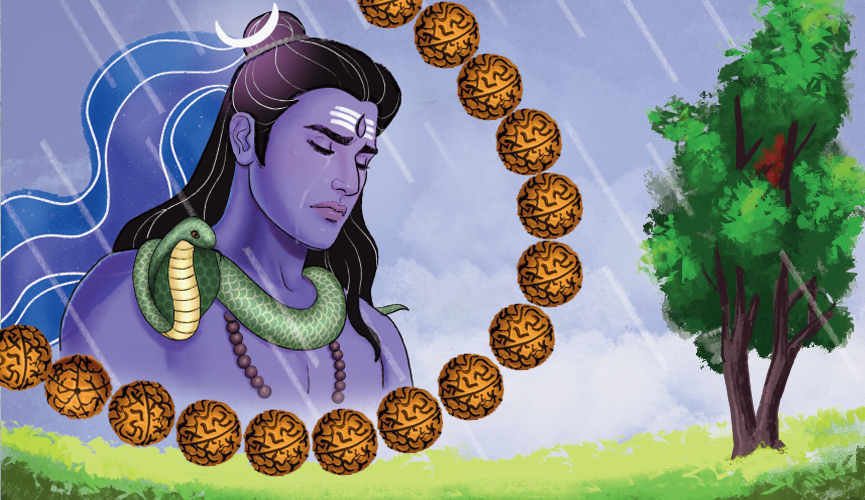The Sacred Rudraksha
- May 8, 2021


The Sacred Rudraksha
- May 8, 2021
By Vijita Mukherjee
Rudraksha means the tears of Rudra. For once, it is all in the name! From an evergreen tree found in the Himalayas and a few other mountains, these wrinkled brown seeds are said to have grown from the tears of Shiva himself.
Some say that Shiva shed tears of ecstasy during meditation and these tears sprouted into the rudraksha trees when they touched the ground. Others believe that Shiva opened his eyes after several years of mediation and saw humanity suffering. Tears of compassion welled up in the divine eyes and wherever these tears fell, there budded the Rudraksha trees. Still, others maintain that these are tears of unimaginable grief, shed when Sati, Shiva’s beloved consort, was consumed in the ceremonial fire.
To receive more such stories in your Inbox & WhatsApp, Please share your Email and Mobile number.

Another story links the tears of Shiva to the intense meditation he undertook to destroy three demons, the Tripurasuras. These demons lived in three floating Purams or cities and were protected by a boon from Brahma. They could only be destroyed when their cities came into a single axis, which happened once in a thousand years. Shiva destroyed the demons and liberated them with a single arrow. Maybe it was the intense concentration with which he focussed as he readied himself to aim at the cities that his half-closed eyes (Ardha Nimeelita neetra) watered and that created the rudraksha.
Ecstasy, compassion, grief or destruction for liberation, whatever be the cause of those tears, the rudraksha is considered to be imbued with energies that are physically curative and spiritually uplifting. It has a special place in Indian mythology. People wear it as a necklace, a bracelet, as earrings, use it like a rosary or japamala to count their prayers or just treasure the fact that they own one.
Once, a merchant named Kikata loaded his donkey with a bag of Rudraksha beads while returning from Badhrachala. The poor beast died on the way home. Its spirit at once merged with Shiva, just because he was carrying this bead at his hour of death.

According to Devi Bhagavatam, Gunanidhi, though a son of a learned scholar, lived a debauched life and committed many unspeakable sins. Shunned by society, he lived on the fringes as an outcast. As fate would have it, one day he lay down under a rudraksha tree and passed away. The messengers of Yama, the yamadutas, were instantly there to carry him to the darkest realms of Naraka. There could be no doubt as to where this one was headed to work out his karma. But lo and behold, the warriors of Shiva, the Shivaganas were already escorting Gunanidhi to Shivaloka, the realm of wisdom and peace! It was the magic of the rudraksha.
Brahma, Saraswati, Kartikeya, Dattatreya, all the learned Rishis and Shiva adorn themselves with these mystical beads.
While each bead from the Rudraksha tree is held sacred, all beads are not equal. Structurally each seed may have one to twenty-one lines. Hence a rudraksha may be ekmukhi (with just one line), dwimukhi (with two lines) and so on, depending on the number of lines it possesses. It is said that in ancient times one could find seeds with up to a hundred and eight lines. These lines correspond to the number of compartments within the seed. There are other special types of beads like the Gauri Shankar which has two beads naturally fused together.

The scientific name of rudraksha is Elaeocarpus ganitrus (Roxb). The evergreen tree which likes to grow in narrow places starts to bear fruits from the age of 3 or 4 years. The fruits are covered with a blue outer husk when fully ripened. This colour is not from a pigment, but due to the structure. The seed or rudraksha vary in colour from white, blood red, black to yellow, and has a natural hole running through its length. It is a rich source of Vitamin C. Some scientific research shows that the bead has electromagnetic properties and a dynamic polarity, which is why it can exert subtle corrective influence on the blood flow in a living being.
Who knows what secrets these gnarled, wizened old beads have to still share with humanity?
To receive more such stories in your Inbox & WhatsApp, Please share your Email and Mobile number.

Comic of The Month
The Sons of Rama
The story of Rama and Sita was first set down by the sage Valmiki in his epic poem 'Ramayana.' Rama was the eldest son of Dasharatha, the king of Ayodhya, who had three wives - Kaushalya, Kaikeyi and Sumitra. Rama was the son of Kaushalya, Bharata of Kaikeyi and Laxmana and Shatrughna of Sumitra. The four princes grew up to be brave and valiant. Rama won the hand of Sita, the daughter of King Janaka. Dasharatha wanted to crown Rama as the king but Kaikeyi objected. Using boons granted to her by Dasharatha earlier, she had Rama banished to the forest. Sita and Laxmana decided to follow Rama. While in the forest, a Rakshasi, Shoorpanakha, accosted Laxmana but had her nose cut off by him. In revenge, her brother Ravana, king of Lanka, carried Sita away. Rama and Laxmana set out to look for her and with the help of an army of monkeys, defeated Ravana. On returning Ayodhya after fourteen years of exile, Rama banished Sita because of the suspicions of his subjects. In the ashrama of sage Valmiki, she gave birth to her twin sons, Luv and Kush.